
Glub,glub
The explosion of pop culture. A youthful generation that had their own language, singers, artists, poets, war, stars and fashions. Carnaby Street in London was the birth of the mod but by the late sixties San Francisco had a new culture that had been developed from the drugs, underground and psychedelia. The decade ended with a culmination of events-a huge summer concert, a famous murderer and the landing on the moon.
And throughout the beginnings of the Vietnam War, the assassination of a president, demonstrations and the threat of nuclear war middle-class kids throughout the world were beginning a youthquake.

Fashion
Art
Televison
Movies
Counter-Culture

The Music
The sixties saw the emergence of many new forms of music. There was some new R&B, many new bubblegum groups, soul music, mowtown, psychedelia and guitar heroes like never before.
Motown began 40 years ago but took off in the sixties.Groups like the Temptations, and the Supremes were the stars of Motown. Along with motown, soul and R&B music gave black artists exposure like never before. Artists like James Brown, Aretha Franklin, Otis Redding, Nat King Cole and Booker T. and the MG's filled the charts and would be inspirations for the musicians that would follow in the years to come.
In February of 1964 four boys from Liverpool, England played on the Ed Sullivan Show and with them began the British Invasion. They of course were the Beatles. On the heels of the Beatles came bands like the Rollings Stones, Herman and the Hermits, the Who, and the Yardbirds to name a few. The Beatles began a phenomenom within their marketing appeal. Teenage girls would buy all of the records, tickets and trinkets they could get their hands on. As the decade moved on so did the style of music. Earlier Bob Dylan had inspired musicians with his poetic lyrics, soon the Beach Boys came out with Pet Sounds and with a revolutionary style of music-psychedlia; then came Sgt. Pepper's Lonely Hearts Club Band by the Beatles.Soon more bands were drawing huge crowds of the now more-mature listeners, though one band, The Monkees never really would!
On the heels of the Beatles came bands like the Rollings Stones, Herman and the Hermits, the Who, and the Yardbirds to name a few. The Beatles began a phenomenom within their marketing appeal. Teenage girls would buy all of the records, tickets and trinkets they could get their hands on. As the decade moved on so did the style of music. Earlier Bob Dylan had inspired musicians with his poetic lyrics, soon the Beach Boys came out with Pet Sounds and with a revolutionary style of music-psychedlia; then came Sgt. Pepper's Lonely Hearts Club Band by the Beatles.Soon more bands were drawing huge crowds of the now more-mature listeners, though one band, The Monkees never really would!
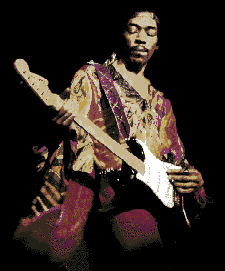 By the mid to late-60's bands from California were getting exposure, such as the Doors, the Grateful Dead, Janis Joplin, and CCR. Long instrumentals were becoming popular with rock groups and the most famous of them all was Iron Butterfly's "In-A-Gadda-Da-Vida". As well the guitar heroes were playing blues-inspired music. They were The Jimi Hendrix Experience and Cream, with their heavy emphasis on more hard rock, while Janis Joplin sang with the Big Brother Holding Company with a very passionate, very blues-inspired voice.
By the mid to late-60's bands from California were getting exposure, such as the Doors, the Grateful Dead, Janis Joplin, and CCR. Long instrumentals were becoming popular with rock groups and the most famous of them all was Iron Butterfly's "In-A-Gadda-Da-Vida". As well the guitar heroes were playing blues-inspired music. They were The Jimi Hendrix Experience and Cream, with their heavy emphasis on more hard rock, while Janis Joplin sang with the Big Brother Holding Company with a very passionate, very blues-inspired voice.
In August of 1969 half a million people went to New York to watch the largest 3-day music festival the world had ever seen-Woodstock. Bands with all types of styles of music played there while the world watched on. It was the climax of an ever-changing music scene.
Some links to the music of the Sixties:
The Beatles
The Rolling Stones
Cream
The Doors
The Jimi Hendrix Experience
The Monkees
Janis Jopin
Iron Butterfly
Jefferson Airplane
Bob Dylan
The Beach Boys
The Grateful Dead
Woodstock

Fashion
Clothes have always been a sign of the times from women staining their legs with tea to fake the look of tights in the 1940's, to poodle skirts, to tie-dye, to bellbottoms and to the classic jean. Yet no decade had the most substantial change in clothing worn by the youth than the Sixties.
The decade began with a new hairstyle for women-teased and flipped until the syle nine years later was long and free. In 1960, Channel created a famous tweed suit that would be copied for years to come and by the next year Yves Saint Laurent would be showing his first independent collection. In 1964 Laurent would create a red, black, blue, white and yellow jersey dress that would signify the beginnings of the mod era.
The following year, 1965, sees the youth crowd don a new style of clothing.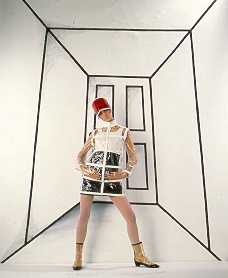 A young designer from England, Mary Quant, raises skirt hemlines like never before and the mini-skirt is born. An Italian designer, Emilio Pucci introduces the fashion world to his unique designs while hypnotic op-art dresses and vinyl clothing are also making their first appearances. Designers like Pierre Cardin and Andre Courreges are also introducing youthful, mod-inspired clothing. By 1966 mod clothing consists of go-go boots, paper dresses, Mary Jane shoes, body paint and pop-art clothes inspired by American artist Andy Warhol. Young men wear Nehru jackets and sport longer hair. Many more girls are wearing the skimpiest of bikinis and there's even a song about an "itsy, bitsy, teen-weeny, yellow, polka dot bikini"! Twiggy, a waif-model from England, had the most desired look and shape for all clothes and modelled the shortest skirts and dresses. But another change was on the horizon.
A young designer from England, Mary Quant, raises skirt hemlines like never before and the mini-skirt is born. An Italian designer, Emilio Pucci introduces the fashion world to his unique designs while hypnotic op-art dresses and vinyl clothing are also making their first appearances. Designers like Pierre Cardin and Andre Courreges are also introducing youthful, mod-inspired clothing. By 1966 mod clothing consists of go-go boots, paper dresses, Mary Jane shoes, body paint and pop-art clothes inspired by American artist Andy Warhol. Young men wear Nehru jackets and sport longer hair. Many more girls are wearing the skimpiest of bikinis and there's even a song about an "itsy, bitsy, teen-weeny, yellow, polka dot bikini"! Twiggy, a waif-model from England, had the most desired look and shape for all clothes and modelled the shortest skirts and dresses. But another change was on the horizon.
The years of 1967 and 1968 saw a change in music, as it did in fashion. The Romantic Look was worn by teenage girls, also known as the Little Girl Look. Fashion takes a decidedly Middle Eastern influence and while the beginnings of the hippy look are evident in the mainstream. By 1969 a new culture known as hippies brought, along with their protests and ideas, clothing entirely different from anything the rest of the decade had witnessed. Clothing became more natural, mini-skirts become accepted in midi or maxi, make- up goes pale, fringe, lovebeads and mood rings are worn and hair becomes long and loose. It is the end of a fashion revolution.
Some excellent references on Sixties fashion can be found at:
Twiggy

The Art
Though traditional styles of art was still being created in the sixites, the decade was also known for the introduction of newer, more main-stream art styles. In the mid-fifties a movement of art called pop-art was created. Pop-art used everyday objects for subjects and medium. The most famous of all pop-art artists was Andy Warhol. He created paintings of soup cans and screen legends which today are recognized throughout the world. Accompanied with the pop-art phenomenom was the introduction of op-art which was usually black and white designs that was created with eye illusion in mind. Fashion took to both styles of art and some of the most interesting designs were then created.
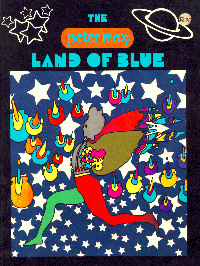 By the mid to late sixties new styles of art were being created. Also new was art influenced by drugs, mainly LSD. To simulate the LSD experience artists would create colourful images on screen projectors and then typically had the participants lay down in the middle of a room while seeing these images flash across the walls and ceilings. These images would undoubtedly be enhanced while under the influence of LSD, and was used in the Merry Prankster's Acid Tests.
By the mid to late sixties new styles of art were being created. Also new was art influenced by drugs, mainly LSD. To simulate the LSD experience artists would create colourful images on screen projectors and then typically had the participants lay down in the middle of a room while seeing these images flash across the walls and ceilings. These images would undoubtedly be enhanced while under the influence of LSD, and was used in the Merry Prankster's Acid Tests.
Another artist to greatly make an impact on the sixties art scene was Peter Max. He employed bright, bold colours and unique images. His paintings were used in commercials and clothing and had a large audience.
The Sixties art scene influenced future decades with its commercialism, unsual subjects and art mediums. The art of this decade is so synonymous with the movement of that time that is might not be that false to say that this art is the most recognizable and representative of the decade that produced it.
The popularity of the half-hour comedy sitcom took off in the sixties. At the beginning of
the decade shows like "The Beverly Hillbillies", "The Dick Van Dyke Show" and "The
Andy Griffith Show" filled the homes of many North Americans. As the decade
progressed now-classic fantastical sitcoms aired such as "Gilligan's Island", "Bewitched" and "I Dream of
Jeanie". "The Flintstones" was a half-hour cartoon that was set in the Stone Age and saw two, young married couples (who of course slept in separate beds) getting into all sorts of situations and mocking real-life people.
(Who can forget Cary Granite or the spy who shasseyed to bluesy music!) In the mid-
sixties a show about an independent, but always well dressed, struggling actress named
Ann Marie in the show "That Girl" was considered revolutionary. Here was a woman who
lived on her own, and juggled her own career and boyfriend-and all of this before the
feminine movement years later! For the younger, teenage crowd "The Monkees" was a
light and fun-filled half hour that had Mickey, Davey, Peter and Mike getting stuck in
various situations which always ended in a song that was on the charts at that time. The
show only lasted a couple of seasons but was memorable! When "The Brady Bunch" began in late-sixites, Marcia Brady, president of the Davy Jones Fan Club, was the envy of millions of girls when Davy showed up at her house! Was that real-life adoration we all saw on her face?!
Like the decades before and what would follow, the sixties created new blockbuster films, new stars and new stories. Some movie stars from the previous decade acted in about-face movies. For example Audrey Hepburn went from a story about a girl who becomes romantically involved with a photographer in "Funny Face", to a woman who uses men for their money in "Breakfast at Tiffany's", to a flower-girl picked up by a linguistic professor in "My Fair Lady" and towards the end of the sixties, to a woman who has an affair and saw the actress perform a nude scene which even Hepburn thought was a bit risque. Stars from the fifties like Elizabeth Taylor (Cleopatra) ,Natalie Wood (Bob & Carol & Ted & Alice), Paul Newman (Cool Hand Luke, Harper, Hud, The Hustler), and Marlon Brando (Mutiny on the Bounty), continued to create movies but new stars were also rising.
The one word that always comes to people's minds when asked to describe the people of
the late sixties is hippie. People associated and gave voice to the hippie-movement were
Allen Ginsberg, Abbie Hoffmann and Timothy Leary. At the beginning of the decade
poets, formerly known as beatniks, recited their writings at assorted establishments. At this
time the drug that was available was marijuana. Experiments with the later-popular LSD
Peter Max
Pop Art
Psychedelic Literature
Black Art Movement

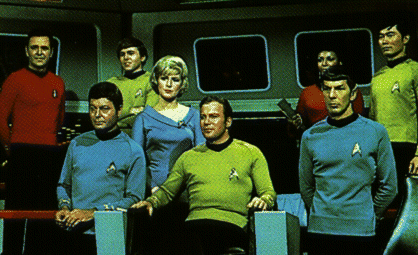 The science-
fiction/fantasy and spy genre were extremely popular in the sixties-and shows based on
them began various cult followings. For the sci-fi viewers "Star Trek" was the epitome of
the genre. Though the show suffered from low ratings when it originally ran and was
therefore cancelled, the producers would later watch in horror as the show became one of
the biggest phenomenoms of the later-century and would later spawn many spin-offs. "Star
Trek" had such loyal viewers when it did originally air that when the moon-landing was
broadcast an angry viewer called up the T.V. station and demanded that they play a re-run
of "Star Trek"! A little more far-out, yet just as bright in full technicolor marvel was "Lost
in Space". The premise for this show was ridiculous yet it also is now considered a classic.
Shows like "The Outer Limits" , "The Twilight Zone" and even "Alfred Hitchcock
Presents" presented viewers each week with strange stories that forced abstract-thinking.
Comic books were the inspiration for some fantasy shows such as the very-popular
"Batman and Robin" and "The Green Hornet". These shows were a combination of sci-fi,
fantasy and the spy genre, always bordering on ridiculous!
The science-
fiction/fantasy and spy genre were extremely popular in the sixties-and shows based on
them began various cult followings. For the sci-fi viewers "Star Trek" was the epitome of
the genre. Though the show suffered from low ratings when it originally ran and was
therefore cancelled, the producers would later watch in horror as the show became one of
the biggest phenomenoms of the later-century and would later spawn many spin-offs. "Star
Trek" had such loyal viewers when it did originally air that when the moon-landing was
broadcast an angry viewer called up the T.V. station and demanded that they play a re-run
of "Star Trek"! A little more far-out, yet just as bright in full technicolor marvel was "Lost
in Space". The premise for this show was ridiculous yet it also is now considered a classic.
Shows like "The Outer Limits" , "The Twilight Zone" and even "Alfred Hitchcock
Presents" presented viewers each week with strange stories that forced abstract-thinking.
Comic books were the inspiration for some fantasy shows such as the very-popular
"Batman and Robin" and "The Green Hornet". These shows were a combination of sci-fi,
fantasy and the spy genre, always bordering on ridiculous!
 The spy
genre was typically much more serious and intelligent then the bulk of the sci-fi shows.
These shows had a basis in the James Bond popularity and the fact that the Cold War
made foreigners potential enemies only a few years earlier. England had the very best of
the spy genre shows with the dapper Mr. Steed and his partner, the kung-fu chopping,
leather-wearing Mrs. Emma Peel starring in "The Avengers". This show had Mr. Steed
going through three differnet partners but the mid-sixties in which Mrs. Peel wore very mod
clothes are looked on as the best of the lot. England also produced shows such as "Secret
Agent Man" and "The Saint" which had pre-James Bond Roger Moore acting with very
un-political corectness to the female popuation.
The spy
genre was typically much more serious and intelligent then the bulk of the sci-fi shows.
These shows had a basis in the James Bond popularity and the fact that the Cold War
made foreigners potential enemies only a few years earlier. England had the very best of
the spy genre shows with the dapper Mr. Steed and his partner, the kung-fu chopping,
leather-wearing Mrs. Emma Peel starring in "The Avengers". This show had Mr. Steed
going through three differnet partners but the mid-sixties in which Mrs. Peel wore very mod
clothes are looked on as the best of the lot. England also produced shows such as "Secret
Agent Man" and "The Saint" which had pre-James Bond Roger Moore acting with very
un-political corectness to the female popuation.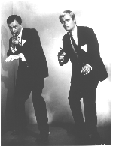 North America caught on to this craze and
had shows like "The Man From U.N.C.L.E.", which saw a dark womanizer Napoleon Solo
and the turtle-neck, shaggy-haired blonde Ilya Kuryakin as international agents who had a
taciturn boss Mr. Waverly, and the more serious "Mission Impossible". This show spawned "The Girl From U.N.C.L.E." which only
lasted a couple of seasons but was more known for the outfits that Stephanie Powers wore!
A more of a comedic spy show was "Agent 99". Most of the secret-agent shows aired in
the mid to late sixties and ended before the decade was over.
North America caught on to this craze and
had shows like "The Man From U.N.C.L.E.", which saw a dark womanizer Napoleon Solo
and the turtle-neck, shaggy-haired blonde Ilya Kuryakin as international agents who had a
taciturn boss Mr. Waverly, and the more serious "Mission Impossible". This show spawned "The Girl From U.N.C.L.E." which only
lasted a couple of seasons but was more known for the outfits that Stephanie Powers wore!
A more of a comedic spy show was "Agent 99". Most of the secret-agent shows aired in
the mid to late sixties and ended before the decade was over.
"The Ed Sullivan Show" was a showcase for musicians, dancers and variety acts to reach
millions of North Americans every Sunday night. A decade before Elvis Presley had
appeared on the show with cameramen given strict orders to shoot from the waist-up
because the censors would not allow the showing of the pelvis of Elvis! When, in the
winter of 1964, the Beatles appeared on the show, the highest ratings ever were recorded.
The popularity of the Sullivan show was now secured and as the decade and styles
progressed so did the type and style of the acts. When The Doors appeared in 1967 they
forever ruined their chances of coming back on the show when Jim Morrison sang "Girl
we couldn't get much higher." after being told that it wasn't allowed. By 1969 the Fifth
Dimension sang "Age of Aquarius/Let the Sunshine In" in a psychedelic background with
flashing lights. Times had definitely changed!
Some sixties television shows can be found here:
That Girl
Star Trek
The Man From
U.N.C.L.E.
Lost in Space

In 1961 Warren Beatty made his big screen debut opposite Natalie Wood in "Splendor in the Grass", a story set in the twenties about two sexually-repressed teenagers. Wood would go on to star in the huge musical "Westside Story" and Beatty would become a new Hollywood hunk and star in "Bonnie and Clyde". Also making his acting debut in the sixties was Robert Redford while Jack Nicholson gained recognition . Reford would star with Jane Fonda in the 1967 "Barefoot in the Park" and go on to star with Paul Newman in the '69 release "Butch Cassidy and the Sundance Kid". Nicholson would write and star in the '67 movie "The Trip", a story that involved the drug-of-the-moment LSD, and then would have a role in the end-all of all sixties films, the 1969 movie "Easy Rider" where he played a guy who wears a football helmet on a bike and has a bit of a drinking problem.
Movie genres influenced the small screen shows. The Beach Party movies with their stars Annette and Frankie had many copycat movies with shallow plots, tons of bikinis, lots of water and, if possible, even more ditzier females. The fifties movie "Gidget" was the dawn of beach-ism and inspired later variations and a T.V. series. Science fiction had been big in the fifties with campy movies such as "Plan 9 From Outer Space" but as the fifties became the sixties mentality changed. With a drug culture based heavily on psychedelics, and with more liberal views on sex some of the classic sci-fi films of all time were created. The most famous of them all was Stanley Kubrick's "2001:A Space Odyssey". This movie had a computer named Hal who had a mind of his own and featured a 20-minute colourful "trip" that was popular with many people. Also becoming an instant classic was the movie based on a French comic strip, "Barbarella". Jane Fonda starred in this 1968 release as Barbarella who learns how to make love, falls for a muscular angel, is attempted to be killed by a pleasure machine and navigates a ship complete with shag carpeting. Also released that years was "Planet of the Apes"in which Charleton Heston crashed his ship and was the sole survivor only to discover that the planet was run by, you guess it, apes. It spawned many sequels but the original is still viewed by many as the best of the series.
 Perhaps the biggest of all cults in the sixties was the spy genre, with its leader, 007 himself, James Bond, based on the novels by Ian Flemming. Sean Connery and a lesser-known George Lazenby played the British super-spy in the sixties. Many movies had the spy plot within the decade and comedy had "The Pink Panther" as a representative on their take of the genre. Along with spy movies many psychological and horror movies had a cult-like following. Alfred Hitchcock, with "Psycho" was the King of the two genres but the sixties also had, as viewed by many, the most frightening movie of the decade, "The Haunting."
Perhaps the biggest of all cults in the sixties was the spy genre, with its leader, 007 himself, James Bond, based on the novels by Ian Flemming. Sean Connery and a lesser-known George Lazenby played the British super-spy in the sixties. Many movies had the spy plot within the decade and comedy had "The Pink Panther" as a representative on their take of the genre. Along with spy movies many psychological and horror movies had a cult-like following. Alfred Hitchcock, with "Psycho" was the King of the two genres but the sixties also had, as viewed by many, the most frightening movie of the decade, "The Haunting."
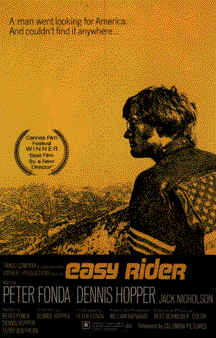 Like every decade some landmark films were created in the sixties. When the Beatles arrived they starred in four movies released with the most famous of them all "A Hard Day's Night." Though it was popular because of the Beatles, it is known today as one of the best rockumentaries and was the major influence for many band movies. The 1963 comedy "It's a Mad, Mad, Mad, Mad World" was known for its never-ending list of stars and a famous end scene in which the characters must find the treasure under the big "W"! Along with many western and war movies came the 1967 "The Dirty Dozen" which has been the cause of much talk, jeering and mockery since it was made. The movie tends to show the difference between male and female viewing preferences! Another movie released in the year of the Summer of Love was "The Graduate". This movie had Dustin Hoffman having a fling with his girlfriend's mother and dealing with the countless repercussions. The famous ending, which involved a wedding and a bus, has inspired and been parodied by many films since. The final movie of the decade which some say summed up the whole movement of the sixites is the '69 release "Easy Rider". This has Peter Fonda and Dennis Hopper driving across America on motorbikes while encountering a hippie commune, violence, an alcoholic and drugs. Captain America (Fonda) and Billy (Hopper) ride to Steppenwolf and must deal with the prejudice against a different generation. The movie is also known for being a classic biker movie and is one of the best movies at illustrating the tumultuous decade.
Like every decade some landmark films were created in the sixties. When the Beatles arrived they starred in four movies released with the most famous of them all "A Hard Day's Night." Though it was popular because of the Beatles, it is known today as one of the best rockumentaries and was the major influence for many band movies. The 1963 comedy "It's a Mad, Mad, Mad, Mad World" was known for its never-ending list of stars and a famous end scene in which the characters must find the treasure under the big "W"! Along with many western and war movies came the 1967 "The Dirty Dozen" which has been the cause of much talk, jeering and mockery since it was made. The movie tends to show the difference between male and female viewing preferences! Another movie released in the year of the Summer of Love was "The Graduate". This movie had Dustin Hoffman having a fling with his girlfriend's mother and dealing with the countless repercussions. The famous ending, which involved a wedding and a bus, has inspired and been parodied by many films since. The final movie of the decade which some say summed up the whole movement of the sixites is the '69 release "Easy Rider". This has Peter Fonda and Dennis Hopper driving across America on motorbikes while encountering a hippie commune, violence, an alcoholic and drugs. Captain America (Fonda) and Billy (Hopper) ride to Steppenwolf and must deal with the prejudice against a different generation. The movie is also known for being a classic biker movie and is one of the best movies at illustrating the tumultuous decade.
Go to some of these places for more information on some of the movies mentioned:
James Bond
2001: A Space Odyssey
Barbarella
Easy Rider
Planet of the Apes

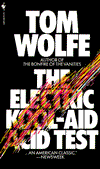 had been occuring since the late fifties but it would not be until drug gurus like Timothy
Leary attempted to make the use of the hallucinogenic drug acceptable. By the time the
mod kids in Carnaby Street were looked to as the setters of all styles, LSD was quickly
gaining notoriety. Even the magazine LIFE began to do stories on the drug, most
noticeably in a 1966 that had reporters attending a party where people trpped out on the
drug. The drug, also known as acid, came in many forms such as tabs and paper and was
odourless and tasteless which made it very easy for people to carry the drug around and
pop it virtually anywhere.
had been occuring since the late fifties but it would not be until drug gurus like Timothy
Leary attempted to make the use of the hallucinogenic drug acceptable. By the time the
mod kids in Carnaby Street were looked to as the setters of all styles, LSD was quickly
gaining notoriety. Even the magazine LIFE began to do stories on the drug, most
noticeably in a 1966 that had reporters attending a party where people trpped out on the
drug. The drug, also known as acid, came in many forms such as tabs and paper and was
odourless and tasteless which made it very easy for people to carry the drug around and
pop it virtually anywhere.
In 1967 "The Summer of Love" was declared. In June the Monterey Pop Music Festival
occured and saw a just-emerging Jimi Hendrix show up The Who. The Beatles released
Sgt. Pepper's Lonely Hearts Club Band and Paul McCartney admitted that he too used
LSD. The band came under fire from that and drug references were looked for in all of
their songs. "Lucy in the Sky With Diamonds" was saw as a drug song with the Lennon
lyric provoking hallucinating images and the fact that the song's intials could stand for
LSD. By 1967 San Francisco, especially Haight-Ashbury, was looked to as a haven for
young people to express themselves. Thousands of kids trekked across America to reach
this place. The hippie movement was just beginning and had the "yuppies" looking on in
distaste and incredibility as young kids painted their faces, grew long hair, decorated it with
flowers, openly did drugs, gave out free food, held love-ins and staged demonstrations.
Protestors take over Columbia University in 1968 and while the war raged on, many young men burnt their draft cards and
found refuge in Canada.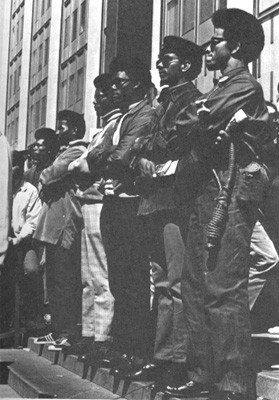 At the same time the Black Panther party was quickly gaining attention for its Black Power movement which would take off following the assassination of Martin Luther King Jr.
At the same time the Black Panther party was quickly gaining attention for its Black Power movement which would take off following the assassination of Martin Luther King Jr.
By the year of 1968, youthful society was taking a
major swing in an opposite direction. Only a few years before many youths screamed for
the Beatles and had looked on in interest as conflict in a small Southern Pacific country
began. A few years later many of these same kids were wearing bellbottoms, tripping on
LSD, growing long hair and speaking out against the Vietnam War. A well-dressed
journalist by the name of Tom Wolfe wrote a book about the adventures of the Merry
Pranksters which had happened a few years earlier. In this now classic hippie-book, a
busload of assorted people with far-out names like Mountain Girl and Anonymous
travelled across North America bringing tons of Day-Glo paint, love and LSD with them.
The Pranksters held acid tests in which they spike Kool-Aid with acid, making it electric
and while people tripped out on the stuff they would show images in a room and
broadcasts freak-outs. The leader of the pack was Ken Kesey who had wrote "One Flew
over the Cuckoo's Nest" and decided to escape the pressures of fame in a psychedelic-
painted 1937 bus. The book, "The Electric Kool-Aid Acid Test" is defined by some as
being the quintessential book on the hippie and drug movement of the sixties. The musical
play "Hair" was shown throughout the country and centered around a story of a yuppie
meeting a bunch of hippies and finding his call. He got disillusioned and signed up to go to
Vietnam but was saved by his friends but ironically, the leader of the hippie group, ended
up being sent to the exact war he had burned his draft for card and protested against. The
play was complete with nudity, swears and drug use but was viewed by many as the
exploitation of the hippie and flower-power movement. Though the underground papers
advertised the play, with an advance ticket sales of 250 000, the credibility of the play
identifying with hippies was doubtful. Nevertheless the play is looked up to now as a good
illustration of hippie life.
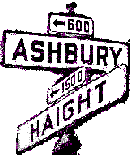 Many underground newspapers run by university and college students who wanted an
outlet for their opinions, were created in the sixties. Some of the most well-known came
from the center of the movement, San Francisco but many such newspapers were being
distributed across both Canada and the United States. A Vancouver alternative newspaper
published a column called "Dr. Hippocrates" in which all kinds of sex-questions were
answered in a very unique way! These papers also had classifieds which ran ads with
people offering their own personal sex services. While cops continuedly monitored the
publication of the papers, sometimes the papers did get in trouble. An Ottawa underground
paper ran a picture of the editor's naked wife painted in psychedelic colours which had the
paper deemed pornographic and obscene in courts. By the summer of 1969 every paper in
North America was advertising the three-day music and arts fair that would be held in mid-
August in New York. This would be Woodstock.
Many underground newspapers run by university and college students who wanted an
outlet for their opinions, were created in the sixties. Some of the most well-known came
from the center of the movement, San Francisco but many such newspapers were being
distributed across both Canada and the United States. A Vancouver alternative newspaper
published a column called "Dr. Hippocrates" in which all kinds of sex-questions were
answered in a very unique way! These papers also had classifieds which ran ads with
people offering their own personal sex services. While cops continuedly monitored the
publication of the papers, sometimes the papers did get in trouble. An Ottawa underground
paper ran a picture of the editor's naked wife painted in psychedelic colours which had the
paper deemed pornographic and obscene in courts. By the summer of 1969 every paper in
North America was advertising the three-day music and arts fair that would be held in mid-
August in New York. This would be Woodstock.
The Woodstock concert has been claimed as the meeting of half a million hippies or total
chaos. The media did a good job of scaring parents as they broadcast what they said was
pandemonium with crazy hippies doing drugs left and right. As the hippie movement grew
restless, new outlets were used for the vent of frustration against the "establishment".
Harder drugs were beginning to be used and many hippies dropped out of society and
moved into communes in the country. When Woodstock happened it would be the final
meeting of the decade of every type of person from flower-children, hippies, Vietnam War
vets, teenagers and yuppies looking to see what the fuss was about. Pop culture and the
movement had reached its pinnacle and next society would move into a new decade with
more mature ideas, a growing population and new problems.
A few of the sites dealing with the above are:
The Sixties Links
Photographs of the
Sixties
The Diggers
The Mods
Haight-Ashbury
The San Franciso Oracle
Timothy Leary
LSD
The Summer of Love

This page was created by Polyester Pam-text ©1998.
All pictures used came from various pages, and the places where they came from should have a link to that page under the section that they're used.
To get credit for the pictures, to supply information, to correct me, or to send suggestions send them here.
Find your own trippy way back!
This page was most groovily hosted by ![]()
Get your own far-out Free Home Page